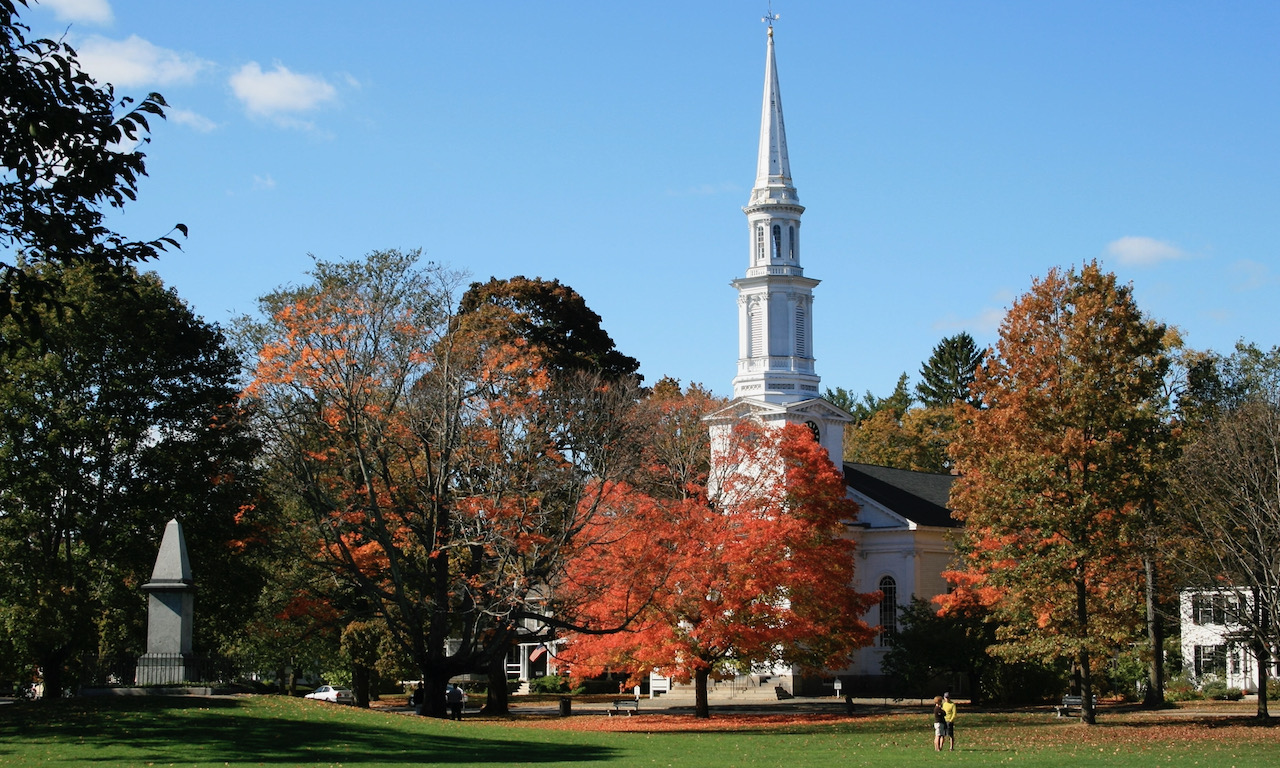On the morning of April 19, 1775, the Lexington Common, now commonly referred to as the Lexington Battle Green, was the site of a brief but momentous skirmish between Lexington Minute Men and a British expeditionary force en route from Boston to seize colonial military supplies stored in Concord, Massachusetts. Though the encounter, in which eight Americans were killed and ten wounded, delayed the British march for little more than half an hour, it marked the beginning of the armed struggle for American independence.
The two-acre green, a triangular open space bounded by Massachusetts Avenue, Harrington Road and Bedford Street, was acquired by the Town of Lexington in the early 1700s and served as common ground and a militia training field. Today it is maintained by the town as a park and memorial to the events of April 19, 1775.
At the southeast corner of the green, facing the route of the British advance, is Henry Hudson Kitson’s Lexington Minute Man; the life-size bronze figure of a colonial farmer carrying his musket is set on a high base of rough fieldstones. Nearby, is a bronze plaque, mounted on a low boulder, marking the site of the wooden belfry which stood on the south side of the green between 1768 and 1797. Two monuments mark the approximate position of the line formed by the Minute Men on April 19th.
The Revolutionary War Monument stands on a slight rise at the western end of the line. Erected in 1799, it consists of a granite obelisk now surrounded by a simple iron fence. On its face is an inscription honoring the eight men who died on the green, seven of whom are interred in the tomb beneath the monument.

